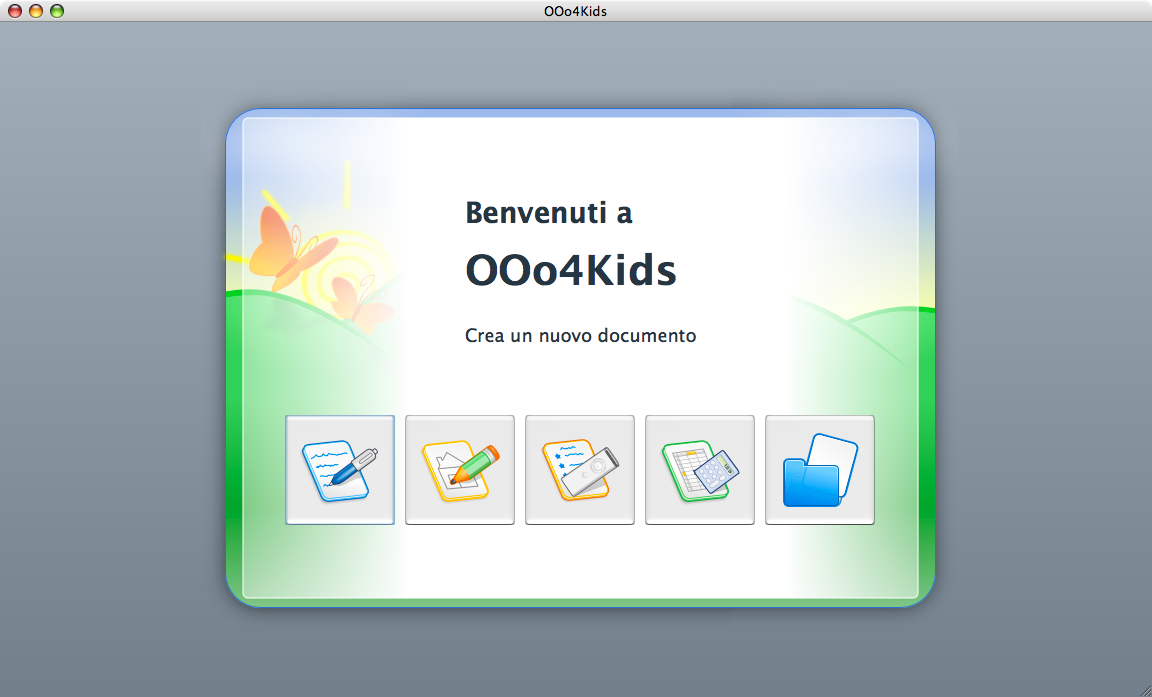OOo4Kids, the office suite for all children... and their parents
OOo4Kids is a special version of OpenOffice.org (the popular, free and easy to use alternative to Microsoft Office) which is very interesting and useful not only for schools, but also for many adult users. Besides, interaction with developers seems much simpler and friendlier than in many other Free Software projects. Keep reading to know, straight from OOo4Kids developer Eric Bachard, what is that makes OOo4kids unique.

Stop: Eric, what are the main features of OOo4Kids?
Eric: OOo4Kids is much simpler to use than the original OpenOffice. The interface is explicitly designed for children in the 7 to 12 years age range: attractive and very simple, without looking for this like some bad 3D cartoon. We have also removed some components which are almost never needed by those users, like support for Databasesii and Java scripting.
Stop: Do you do all this only to simplify the interface?
Eric: No, we also want to solve another serious problem which is very common here in France and, I’m sure, everywhere else. Many of our users, especially schools, only have old computers with little memory. Other users asked me an office suite that would run even on XO laptops. To make OpenOffice run on these limited machines we had to simplify its source code and reduce the binary size of about 35%.
Stop: That’s an impressive task! What is the result?
Eric: OOo4Kids runs correctly on a Celeron 500 + 128 MB of RAM, and on the XO too.
Stop: OOo4Kids doesn’t seem limited at all to primary school children! Everybody who thinks that normal office suites are too slow and complicated, or just has a slower computer will love it, but… does it only run on Linux?
Eric: Not at all. Just like the original OpenOffice, it also works on Windows and Mac OS.
Stop: Is OOo4Kids available in different languages?
Eric: Yes. The current version is available in French, Portuguese, English, German and Spanish. An Italian version is in the works. Everybody willing to add other languages is welcome to join the project.
Stop: I mentioned that OOo4Kids is interesting also because how the way it is developed. How do you work, and why?
Eric: Our method is very simple! We developers ask questions directly to the teachers who join the project, because they have the right knowledge. It is teachers who know very well the children, what they can do and what is not suited to them. Teachers also know best than us what they need from OpenOffice and the requirements of local school programs. Therefore, we ask teachers things like “What features have to be used, at a given age” or “What do you want to be immediately visible in the graphical interface, before clicking anywhere”. When teachers answer, we the developers explain what is “doable”. Eventually, after several iterations, we achieve what is expected, or at least be as close as possible.
Stop: Can you describe to us an example of this collaboration?
Eric: We had no exact idea of what the simplified toolbars of the word processor should look like. Then we got an extremely interesting suggestion just through the “Ideas and Suggestions” page of our wiki: different, user-selectable toolbars for several age ranges. Looking at the proposal, we could easily see that we should implement the toolbar for children between 7 and 9 years of age first, and then the one for older kids.
Stop: So, in the long run, it’s almost like the teachers themselves were able to modify the software to fit their own needs.
Eric: Correct. This is a major difference from the standard, official version of OpenOffice, in which it is much harder to have added some feature that you requested.
Stop: How and where does the collaborative work happen?
Eric: At places like Campus Libre and the Forge. If you want to request a new feature, however, you should describe it, adding images if possible, into a new page in the OOo4Kids wiki. (Note: don’t worry, it isn’t more difficult than writing an email with Yahoo, Hotmail or Google!)
Stop: What happens next?
Eric: We discuss all proposals on our mailing lists, giving priority to the ones with clear descriptions and rationales. Once a proposal has been accepted, we add it to our Roadmap according to its priority.
Stop: Thanks, Eric! Readers who wish to see what OOo4Kids looks like can use this gallery of OOo4Kids screenshots at Softonic.
Who writes this, why, and how to help
I am Marco Fioretti, tech writer and aspiring polymath doing human-digital research and popularization.
I do it because YOUR civil rights and the quality of YOUR life depend every year more on how software is used AROUND you.
To this end, I have already shared more than a million words on this blog, without any paywall or user tracking, and am sharing the next million through a newsletter, also without any paywall.
The more direct support I get, the more I can continue to inform for free parents, teachers, decision makers, and everybody else who should know more stuff like this. You can support me with paid subscriptions to my newsletter, donations via PayPal (mfioretti@nexaima.net) or LiberaPay, or in any of the other ways listed here.THANKS for your support!